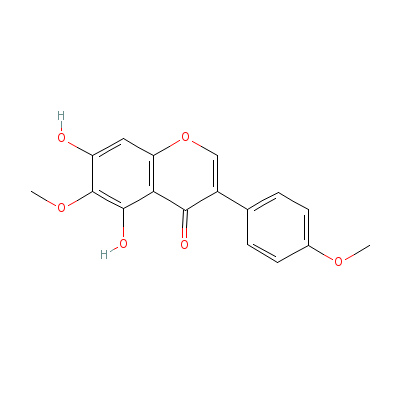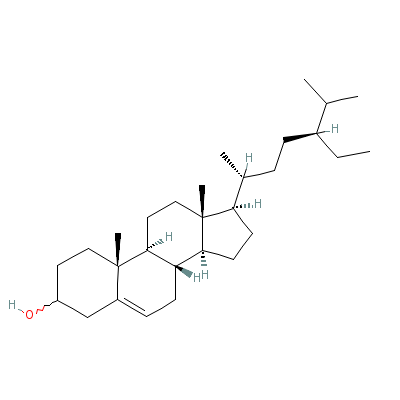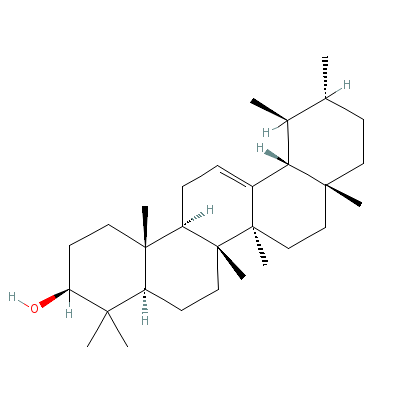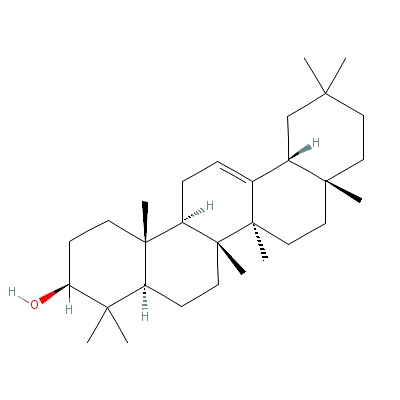| |
|
|
Botanical Name |
: |
Iris germanica L. |
English
Name |
: |
Orris |
Family |
: |
Iridaceae |
| |
General Info
| Description |
 |
|
A small perennial herb 40-90 cm in height with stout, branched stems. Leaves 30-70 cm x 20-35 mm. Somewhat glaucous; inflorescence, 4-flowered spathes; flowers on the stalk are bent in one over against another and have varied colours for they are white, pale, black, purple or azure. The roots underneath are knotty and strong. The best has a thick stumpy root, hard to break, of a faint yellow colour with an especially good scent and very bitter to the taste. |
| Herb Effects |
 |
|
The root is diuretic, emetic, expectorant and mildly purgative. Induces a decline in smooth muscle activity (in vitro) and alleviates spasms (aqueous plant extract); promotes nasal discharge and reduces fever (rhizome). |
Chemistry
| Active Ingredients |
 |
|
Iridin, irigenin, irisolidone, beta-sitosterol, alpha and beta-amyrin and acetovanillone (rhizome). |
| Chemistry
of Active Ingredients |
 |
|
|
 |
Name |
CAS# |
IUPAC Name |
Formula |
Structure |
 |
|
| Iridin |
Not Available |
5-hydroxy-3-(3-hydro
xy-4,5-dimethoxy-phe
nyl)-6-methoxy-7-[(2
S,3R,4S,5S
,6R)-3,4
,5-trihydroxy-6-(hyd
roxymethyl)oxan-2-yl
]oxy-chromen-4-one |
C24H26O13 |

|
| Irigenin |
548-76-5 |
5,7-dihydroxy-3-(3-h
ydroxy-4,5-dimethoxy
-phenyl)-6-methoxy-c
hromen-4-o
ne |
C18H16O8 |

|
| Irisolidone |
2345-17-7 |
5,7-dihydroxy-6-meth
oxy-3-(4-methoxyphen
yl)chromen-4-one |
C17H14O6 |

|
| Beta-Sitosterol |
5779-62-4 |
17-(5-ethyl-6-methyl
-heptan-2-yl)-10,13-
dimethyl-2,3,4,7,8,9
,11,12,14,
15,16,17
-dodecahydro-1H-cycl
openta[a]phenanthren
-3-ol |
C29H50O |

|
| alpha-Amyrin |
638-95-9 |
4,4,6a,6b,8a,11,12,1
4b-octamethyl-2,3,4a
,5,6,7,8,9,10,11,12,
12a,14,14a
-tetrade
cahydro-1H-picen-3-o
l |
C30H50O |

|
| beta-Amyrin |
559-70-6 |
4,4,6a,6b,8a,11,11,1
4b-octamethyl-1,2,3,
4a,5,6,7,8,9,10,12,1
2a,14,14a-
tetradec
ahydropicen-3-ol |
C30H50O |

|
| Acetovanillone |
Not Available |
1-(4-hydroxy-3-metho
xy-phenyl)ethanone |
C9H10O3 |

|
|
Pharmacology
| Medicinal Use |
 |
|
Frostbite (leaf extract); to babies to help in teething(dried roots); as a laxative, dropsy, expectorant, reducing fever and halitosis (rhizome). The juice of the fresh root is a strong purge of great efficiency in the treatment of dropsy. |
| Contraindication |
 |
|
Ingesion of irisin, a resinous substance present in leaves especially rhizome can cause severe gastric disturbances. |
| Reference |
 |
|
 Sharma, Classical Uses of Medicinal Plants. Sharma, Classical Uses of Medicinal Plants.
Chandel et al., Biodiversity in Medicinal and Aromatic Plants in India.
Bentley and Trimen, Medicinal Plants. |
Dealers
Products
|
|
|
|
|